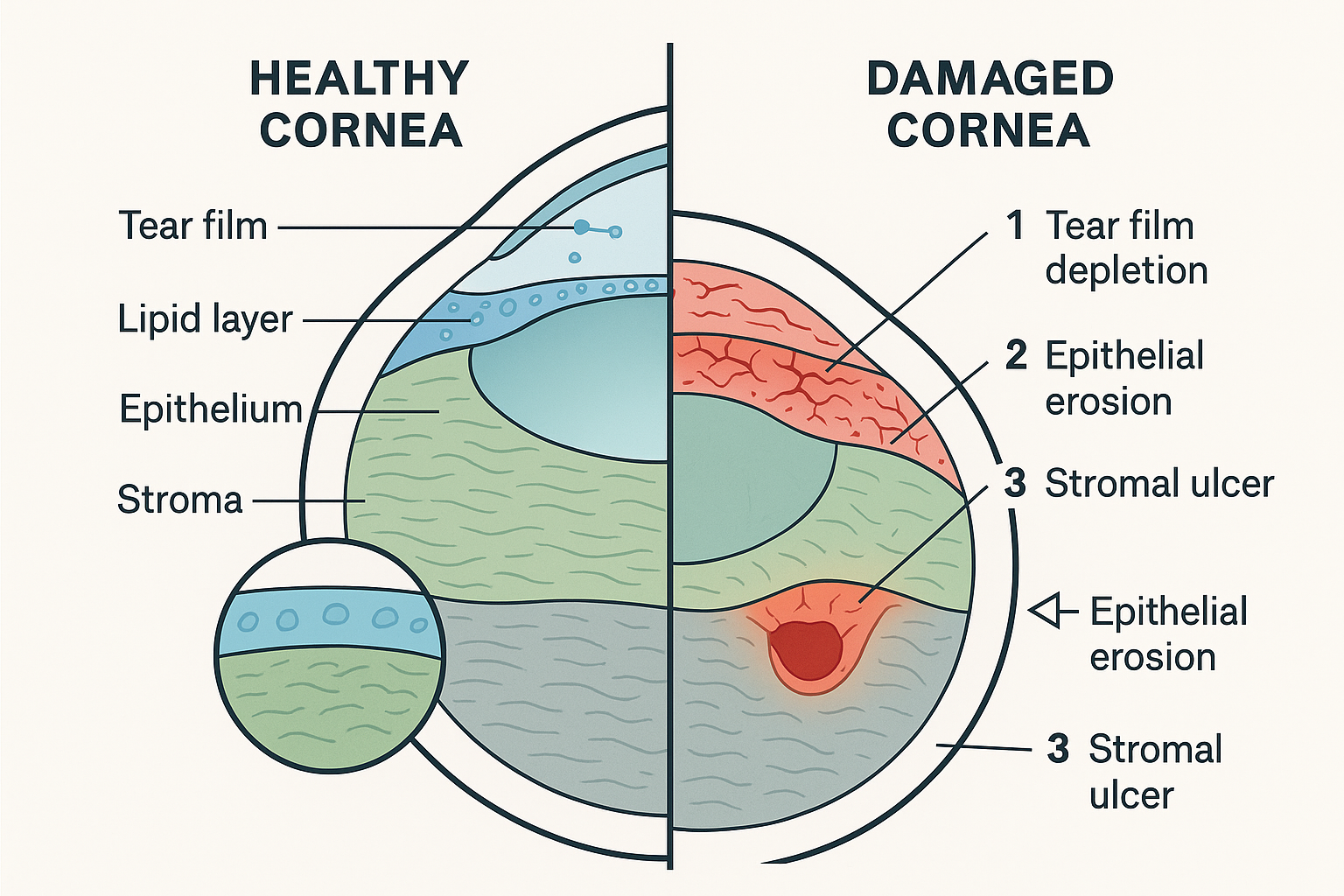Dry eye disease (DED) is more than a nuisance—it can seriously threaten your eye health. One of the most serious complications is corneal damage, including ulcers, that may lead to irreversible vision loss if left untreated.
What Causes Corneal Ulcers in Dry Eye?
The cornea relies on a steady layer of tears for nourishment and protection. Chronic dryness causes micro-abrasions on the surface. Without tear film protection, these small injuries can become infected and evolve into corneal ulcers—open sores that erode the cornea.
Evidence-Based Insight
According to the American Academy of Ophthalmology, untreated dry eye can lead to keratitis, which increases the risk of corneal ulceration (AAO, 2023). A study published in Ocular Surface Journal found that moderate to severe DED patients have a significantly higher incidence of epithelial defects, a precursor to corneal ulcers (Bron et al., 2017).
Symptoms to Watch For
-
Eye pain or redness
-
Sensitivity to light
-
Blurry vision
-
A feeling of something in the eye
Why Early Treatment Matters
If a corneal ulcer is not caught early, it can lead to corneal scarring, which permanently blurs vision. In extreme cases, it may require a corneal transplant.
Image Concept
"Cross-Section of an Eye Showing Corneal Ulcer Formation"
A labeled diagram showing a healthy cornea vs. one with dry eye–induced microabrasions leading to an ulcer. Include layers: tear film, epithelium, stroma.
